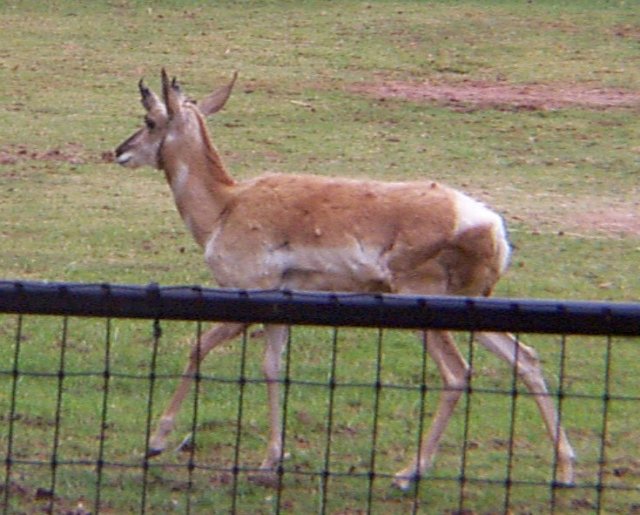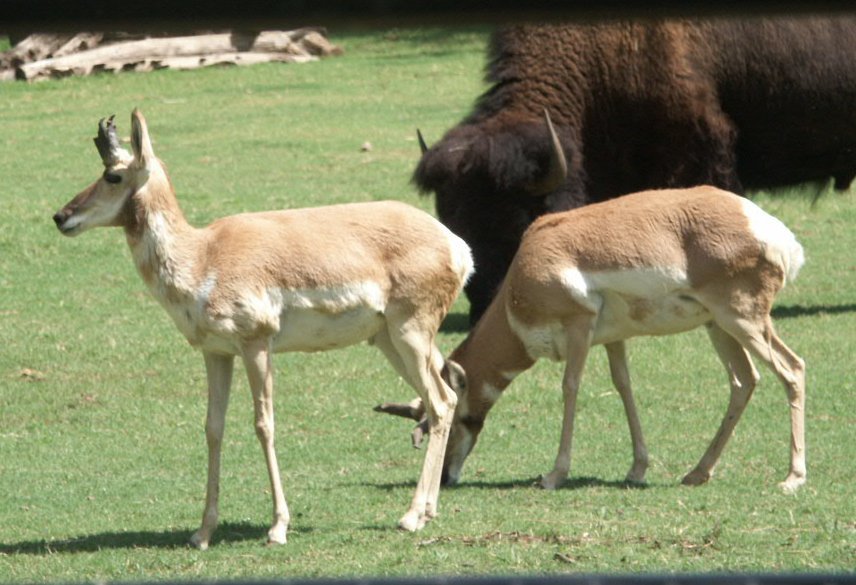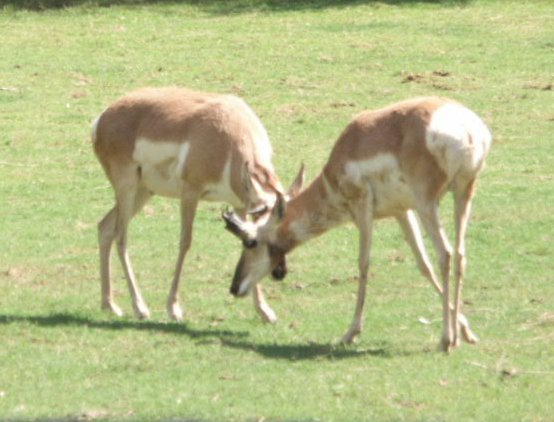|
|
|
. |
Scientific Name:Antilocapra americana |
| Geographical Range:Throughout all four deserts of the American Southwest. | |
| Habitat:Grasslands, brushlands, bunch-grass and sagebrush areas of open plains and deserts. | |
| Diet in the Wild: Forbs, legumes and cactus. | |
| Conservation Status:Not protected. | |
| Location in the Zoo: Thundering Plains. | |
|
|
|
| Physical
Description:
Both the female and male pronghorns have horns but the females' are tiny spikes versus the males' 12-18 inch horns. They are the only animals in the world who shed their horns annually. The color of these pronghorns varies from tan to dark brown with white patches on their stomach and on their rumps. The male pronghorns have black patches on the lower jaw below the eye and a black mask extending back from the nose. These markings make it easier for us to distinguish the males from the females. |
Social
Organization:
The busks are aggressive in defending their territories against other pronghorn bucks. Their harems usually contain 3-8 does. In the winter, however, their bands are usually larger than the ones in the summer time. Pronghorns can survive in temperatures ranging from 180 degrees to 50 degrees below zero. |
| Special
Adaptations:
Because Pronghorns graze large open fields, they rely on their speed and keen eyesight. Pronghorns can detect movement up to four miles away. |
 |
| Reproductive
Behavior:
Pronghorns usually breed for the first time when they get to be 16-17 months of age. The pronghorns' mating season is in the fall. The babies are usually born in late May or early June with the majority of the births being twins. The newborns don't have an odor when they're born and know to stay perfectly still for hours. This is their defense from predators such as coyotes. |
The
Animal at the Zoo:
The zoo only had one Pronghorn on displayed when I went. He was amoung a bunch of giant American Bisons which made him look a lot smaller than what he really was. For the most part, he laid still in the afternoon sun. He didn't seem to have a care in the world. |
 |
Page
Author:
Amy Buffington anbuff2000@yahoo.com Sources
and Links:
|